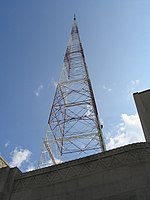Kent Road Village
Buildings and structures in Richmond, VirginiaColonial Revival architecture in VirginiaHistoric districts on the National Register of Historic Places in VirginiaNRHP infobox with nocatNational Register of Historic Places in Richmond, Virginia ... and 4 more
Residential buildings completed in 1943Residential buildings on the National Register of Historic Places in VirginiaRichmond, Virginia Registered Historic Place stubsUse mdy dates from August 2023

Kent Road Village is a historic apartment complex and national historic district located in Richmond, Virginia. The complex was built in 1942–1943, and consists of 11 Colonial Revival style brick buildings. They are two stories in height and include three different exterior treatments. The complex was designed by Richmond architect E. Tucker Carlton and built under the auspices of the Federal Housing Administration.It was listed on the National Register of Historic Places in 2011.
Excerpt from the Wikipedia article Kent Road Village (License: CC BY-SA 3.0, Authors, Images).Kent Road Village
West Franklin Street, Richmond Westhampton
Geographical coordinates (GPS) Address Nearby Places Show on map
Geographical coordinates (GPS)
| Latitude | Longitude |
|---|---|
| N 37.566111111111 ° | E -77.485 ° |
Address
West Franklin Street 3900
23221 Richmond, Westhampton
Virginia, United States
Open on Google Maps







